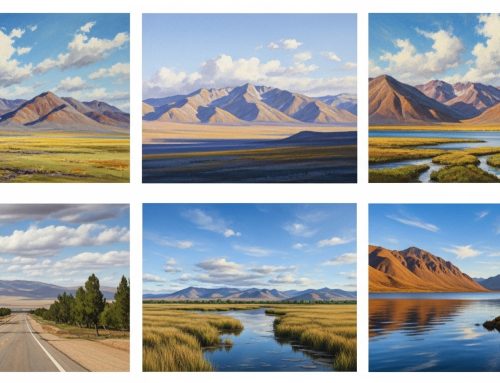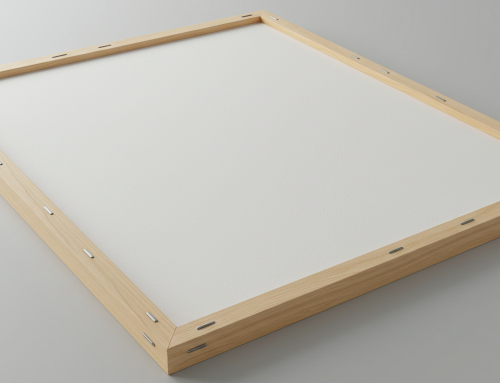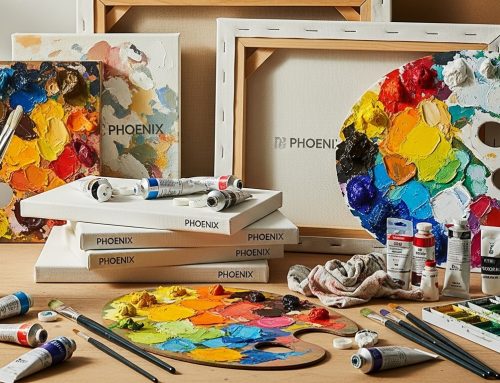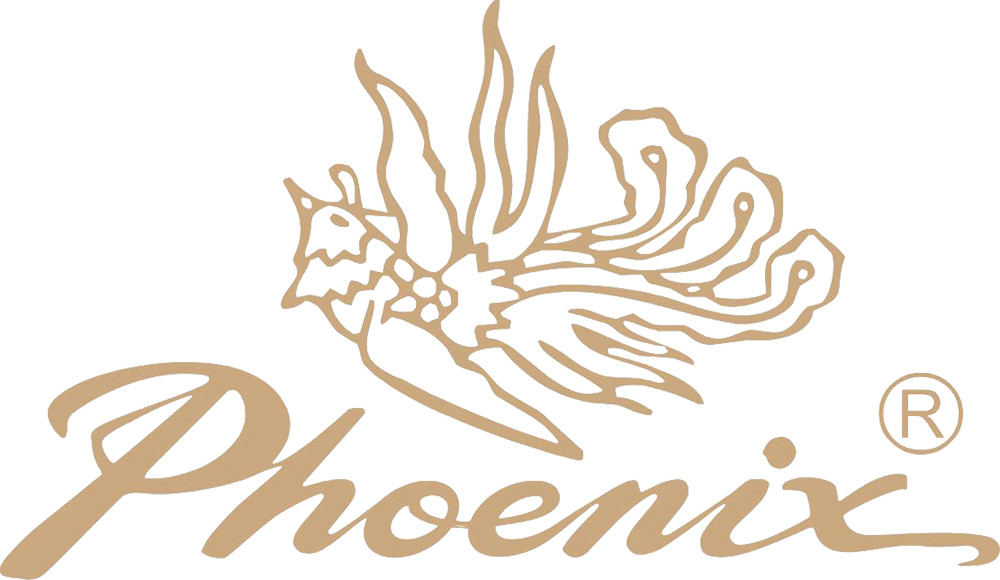Advanced Techniques for Stretched Canvas in Extreme Whether
In the art supply industry, stretched canvas can mold paintings of different qualities in different climates. In high altitude environments, stretched canvas receives impacts from various aspects, including dry air, large temperature differences, changes in air pressure, and so on, allowing the frames to produce problems such as frame looseness, frame deformation, and weakening of pigment adhesion. All these test the adaptability of the best art supplies, but also test the outdoor sketcher’s choice of canvas art supplies. This is where the innovative process of framing stands out as important in terms of frame tension and performance.
The High-Altitude affect on Stretched Canvas
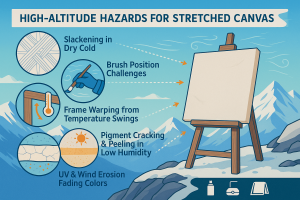
Have you ever experienced this: when sketching in high-altitude regions, your stretched canvas is often slacken due to the dry, cold climate, posing troublesome to the sketching process? A loose canvas makes it difficult to position your painting brush accurately, leaving you unable to find the desired feel, with brushstrokes failing to render as intended, often resulting in an outcome far from your expectations—especially during prolonged outdoor sessions, where unstable tension becomes even more pronounced. Additionally, the temperature fluctuations in high-altitude areas (such as a 20-30°C day-night difference) can lead to deformation of wooden frames, causing the canvas to warp. This not only affects the overall structure of the artwork but also introduces further issues during preservation. After completion, the canvas’s alternating tension and relaxation negatively impacts pigment adhesion; the low-humidity environment dries out the canvas surface, making pigments prone to cracking or peeling, severely threatening the long-term preservation quality of the work. Gallery owners and collectors are particularly concerned about this instability, while exposure to ultraviolet rays and wind erosion further exacerbates the risk of fading. All of this underscores the necessity of selecting an adaptive stretched canvas for extreme climates.
Canvas Tension Techniques
The craft of canvas painting stretching hinges on how to tighten a canvas, a technique refined through precision stretching and the strategic use of wooden wedges. This process restores tautness, countering slackening induced by high-altitude dryness. High-quality frames for stretched canvas, often crafted from kiln-dried pine, make it more stable by resisting deformation caused by temperature shifts. Some manufacturers employ multi-point tension adjustments, a method that distributes stress evenly across the frame, ensuring the stretched canvas remains taut during prolonged outdoor use. For example, a technique involving reinforced corner bracing has been shown to improve resistance to environmental pressure, a critical factor for maintaining performance in challenging conditions.
Coating and Frame Technique
The specialized coating formula of pre stretched canvas make it ideally suited for the harsh conditions of high-altitude sketching. Users on the oil painting forum have noted that traditional pre-stretched canvases often suffer from pigment peeling or dulling in dry, cold climates due to inadequate coating quality. In contrast, advanced coating formulations, such as those using enhanced acrylic resins, penetrate the canvas fibers deeply, creating a protective barrier. This technology not only extends pigment lifespan by preventing fading but also resists ultraviolet damage and low-humidity-induced oxidation, preserving the vibrancy of oil or acrylic paintings. For instance, one artist shared that their custom-coated canvas retained its initial colors months after a high-altitude session, while an untreated canvas showed noticeable fading. The development of these coatings also addresses environmental adaptability, minimizing micro-cracks caused by climate shifts.
The production of canvas roll incorporates this coating technology, supporting bulk customization to meet the diverse needs of art schools and commercial projects. Discussions on Artist Lounge reveal that many educational institutions struggle with uneven coating distribution in traditional canvas rolls, leading to inconsistent pigment adhesion and stability during mass use. Advanced manufacturing techniques, such as canvas roll coating and heat-curing processes, ensure uniform coating across each roll, providing a brilliant foundation for classrooms or commercial installations. Users also highlight that bulk-customized canvas rolls allow for size-specific cutting, reducing waste while global supply chains—spanning production hubs in Asia and Europe—guarantee steady availability. A commercial decorator reported ordering a 10-meter roll of coated canvas for a large mural project, noting that the coating’s adhesion kept pigments intact after three months of outdoor exposure, underscoring its weather resistance.
Moreover, Reddit threads emphasize the coating formula’s impact on the tactile and expressive qualities of pigments. On painting, a professional artist tested various pre-stretched canvases and found that polymer-based coatings not only improved adhesion but also enhanced brushstroke smoothness, particularly in high-altitude settings. The dry, cold air no longer rapidly absorbed paint moisture, maintaining color saturation—a key advantage for expressive work. Global supply chains further bolster this technology, with automated coating lines and multi-point quality checks ensuring consistent performance across batches. This reliability meets the high standards of art schools for bulk purchases and commercial projects, giving high-altitude sketching practitioners confidence in selecting pre stretched canvas and canvas roll to tackle climate challenges effectively.
Selecting Stretched Canvas under extreme weather
Choosing the right stretched canvas requires a deep understanding of art craft standards designed for high-altitude challenges. Optimal canvas tension technology prevents slackening, while various frames for stretched canvas provide structural integrity against deformation. Advanced coatings enhance performance by improving adhesion, mitigating the risk of fading in dry conditions. A 2024 industry survey revealed that 65% of art suppliers encountered tension-related issues in extreme climates, highlighting the need for specialized techniques. Innovators in the field offer consistent quality and customizable options.
High-Altitude Performance Application
A compelling example comes from an art academy’s summer workshop in a high-altitude region, where traditional stretched canvas struggled with slackening, reducing the vibrancy and texture of paintings. By adopting a pre stretched canvas enhanced with advanced tension technology, the institution achieved a 25% improvement in tension stability and maintained rich color saturation. The use of kiln-dried pine frames for stretched canvas prevented deformation, while specialized coatings ensured pigment adhesion, preserving the artwork’s expressive quality. This case underscores the transformative impact of crafts on high-altitude projects.
Industry Insights from Real-World Applications
Further evidence of these techniques’ effect can be seen in a commercial art installation project, where stretched canvas panels were exposed to constant wind and dry air. The implementation of multi-point tension adjustments and reinforced frames for stretched canvas maintained structural integrity, while advanced coatings prevented pigment loss over a six-month period. Feedback from project managers highlighted a 30% reduction in maintenance costs, demonstrating the practical benefits of investing in climate-adaptive canvas art supplies.
The demand for climate-adaptive canvas art supplies is projected to grow by 15% in 2025, driven by the need for resilient and sustainable materials. Advances in tension regulation technology, such as automated stretching systems and precision framing, are setting new benchmarks for performance. Eco-friendly coatings, designed to enhance pigment adhesion without environmental harm, are gaining traction, aligning with global sustainability goals. Companies with extensive production networks, delivering millions of units monthly, are at the forefront, integrating these innovations to meet the evolving needs of the art industry.
Businesses seeking to leverage these advancements are invited to connect with industry experts for customized stretched canvas or bulk canvas roll solutions. Technical documentation, including detailed case studies like the academy example, and performance data are available to guide your decisions. These resources showcase how tailored craftsmanship can enhance your offerings, addressing the specific challenges of high-altitude environments and beyond.
Stretched canvas is evolving through advanced craftsmanship to optimize tension and performance in high-altitude settings, delivering the best art supplies for professional applications. As 2025 unfolds, industry leaders continue to drive innovation, opening doors for collaboration. Take the next step—explore these techniques to elevate your business today.

